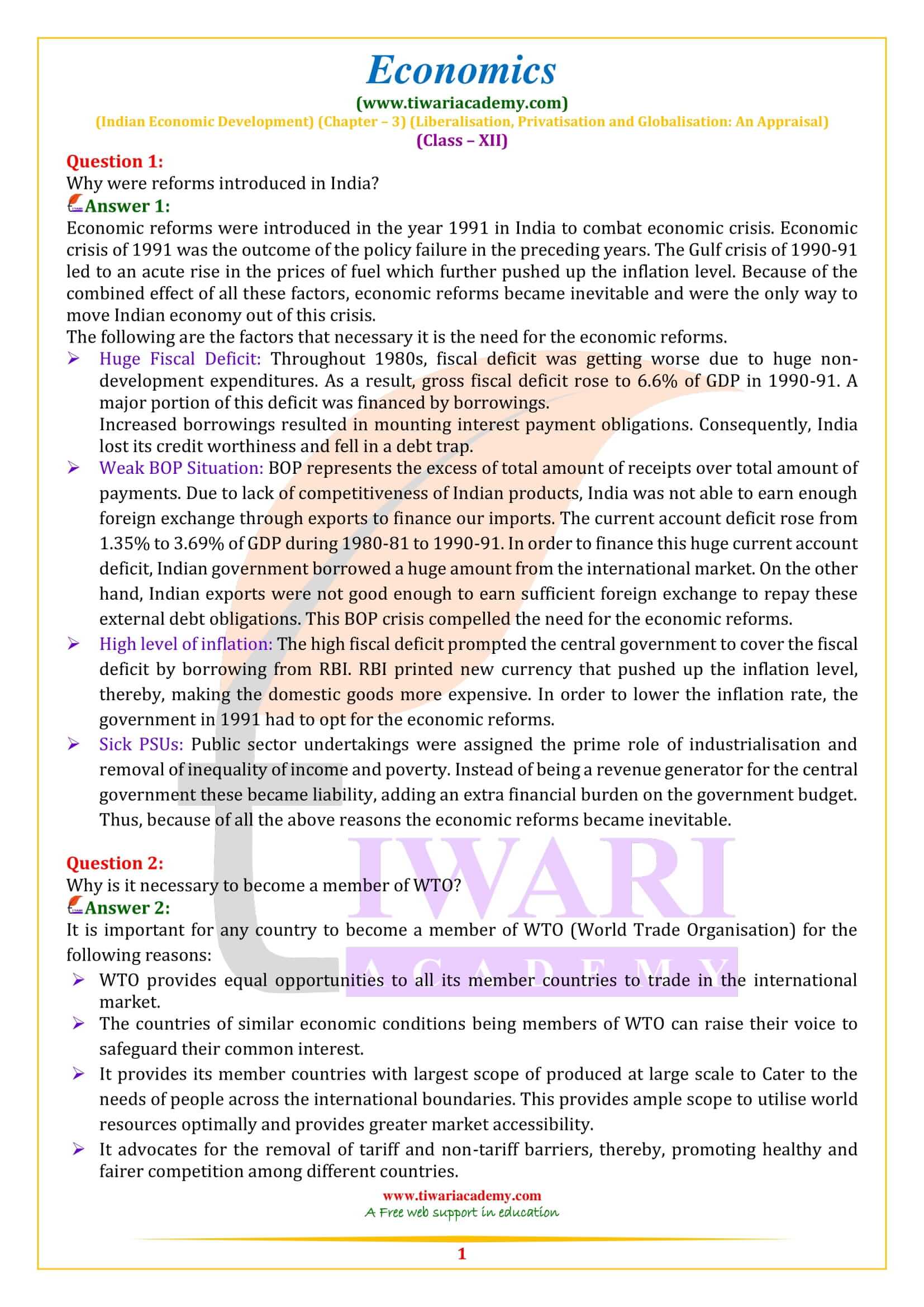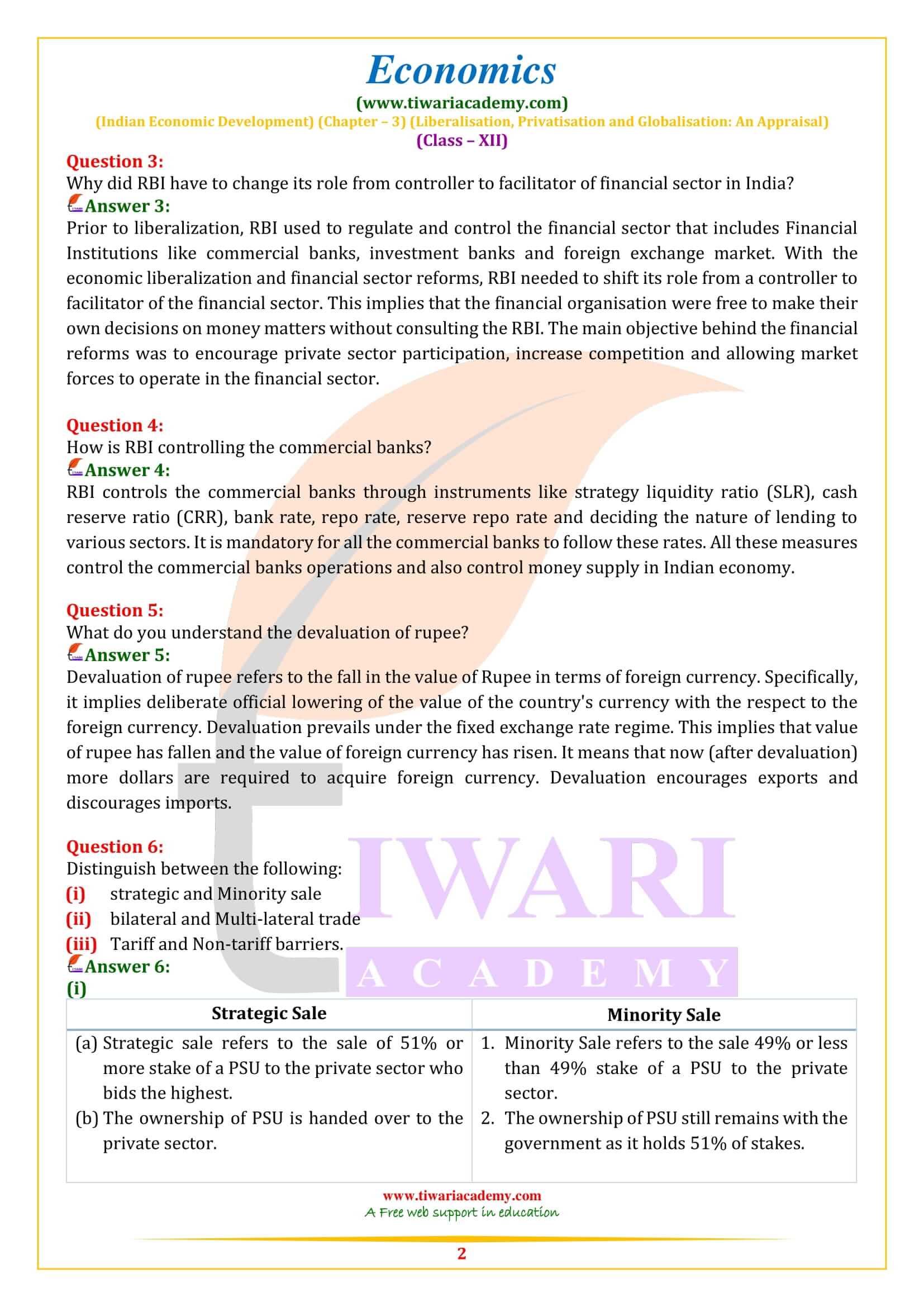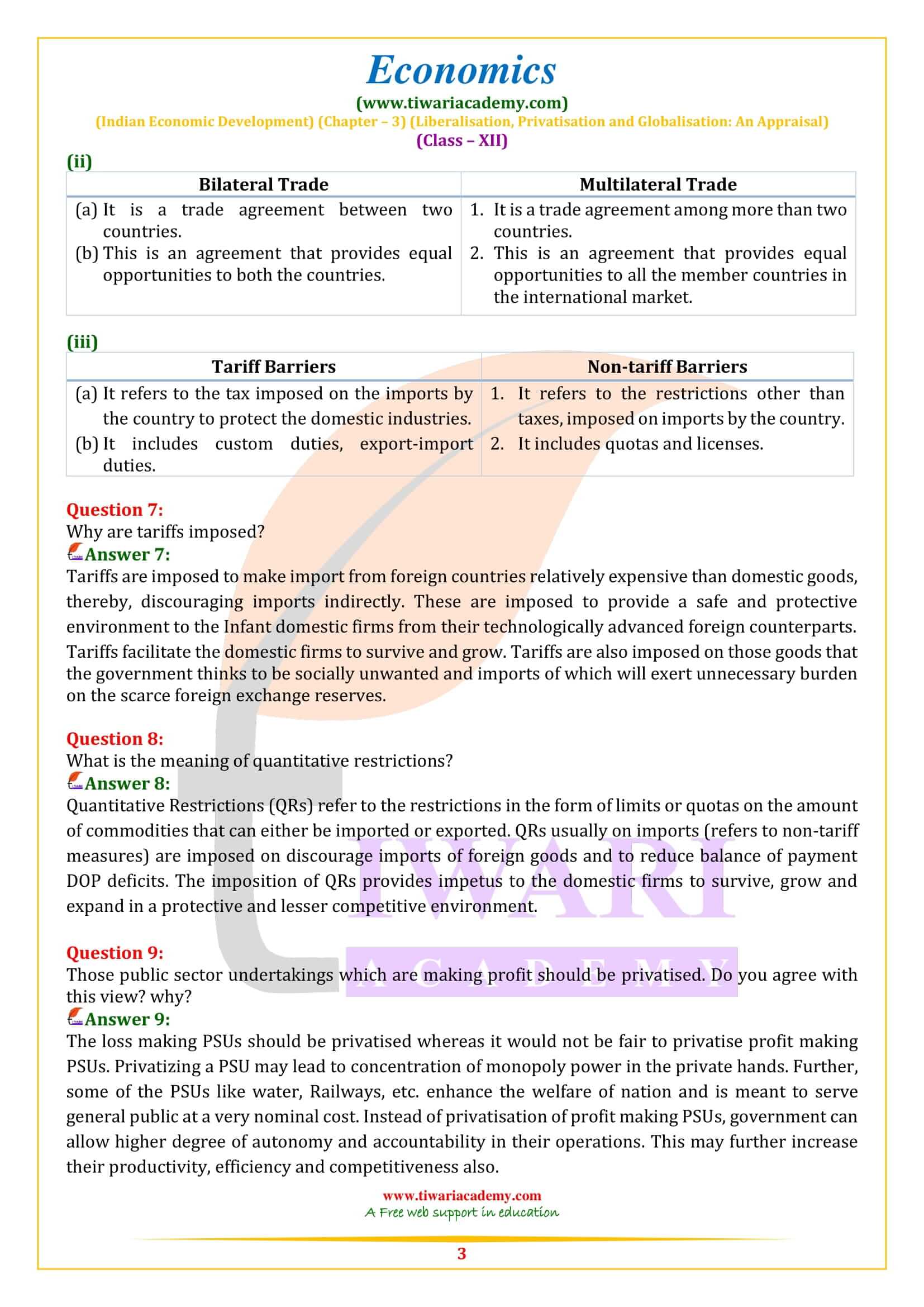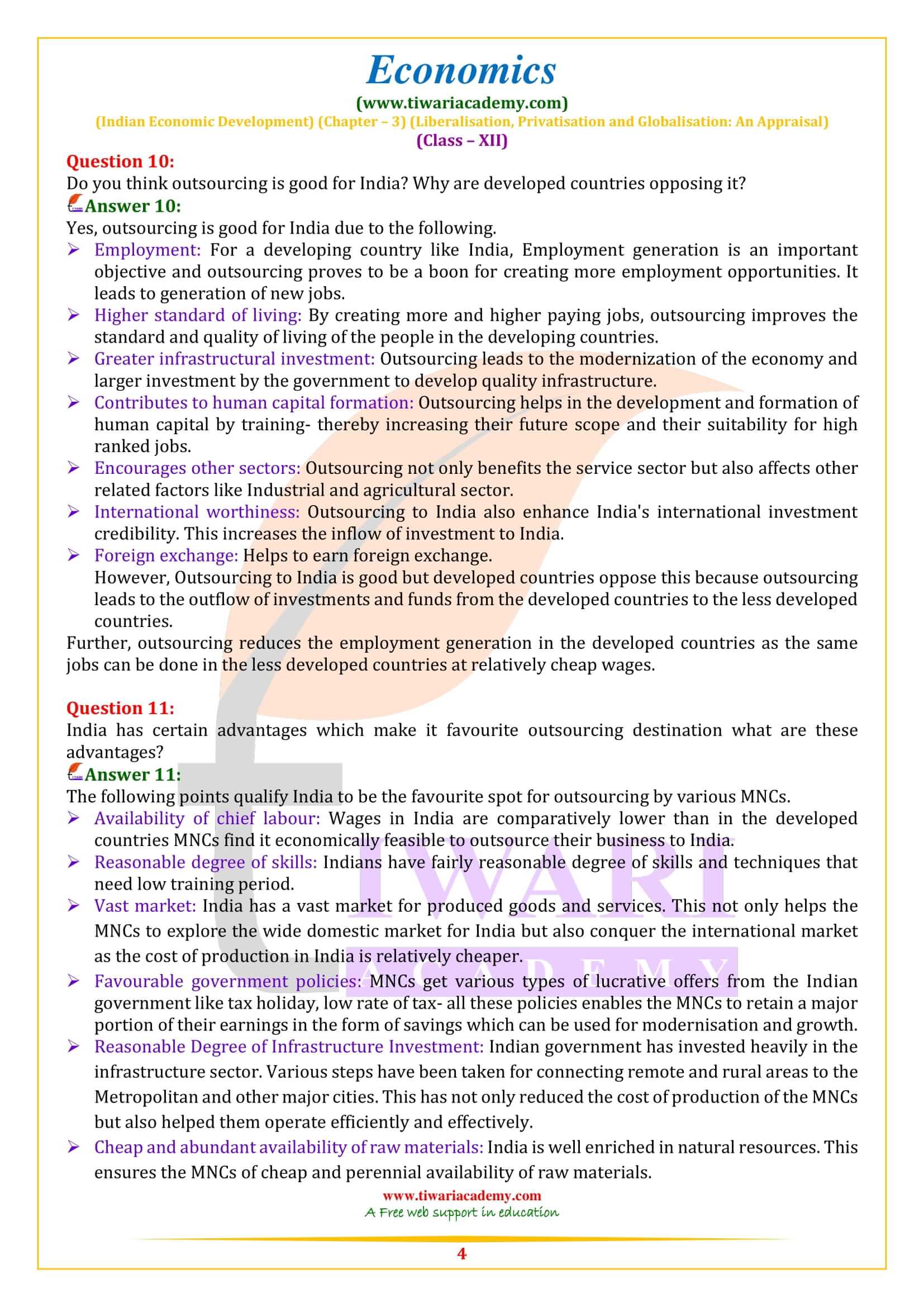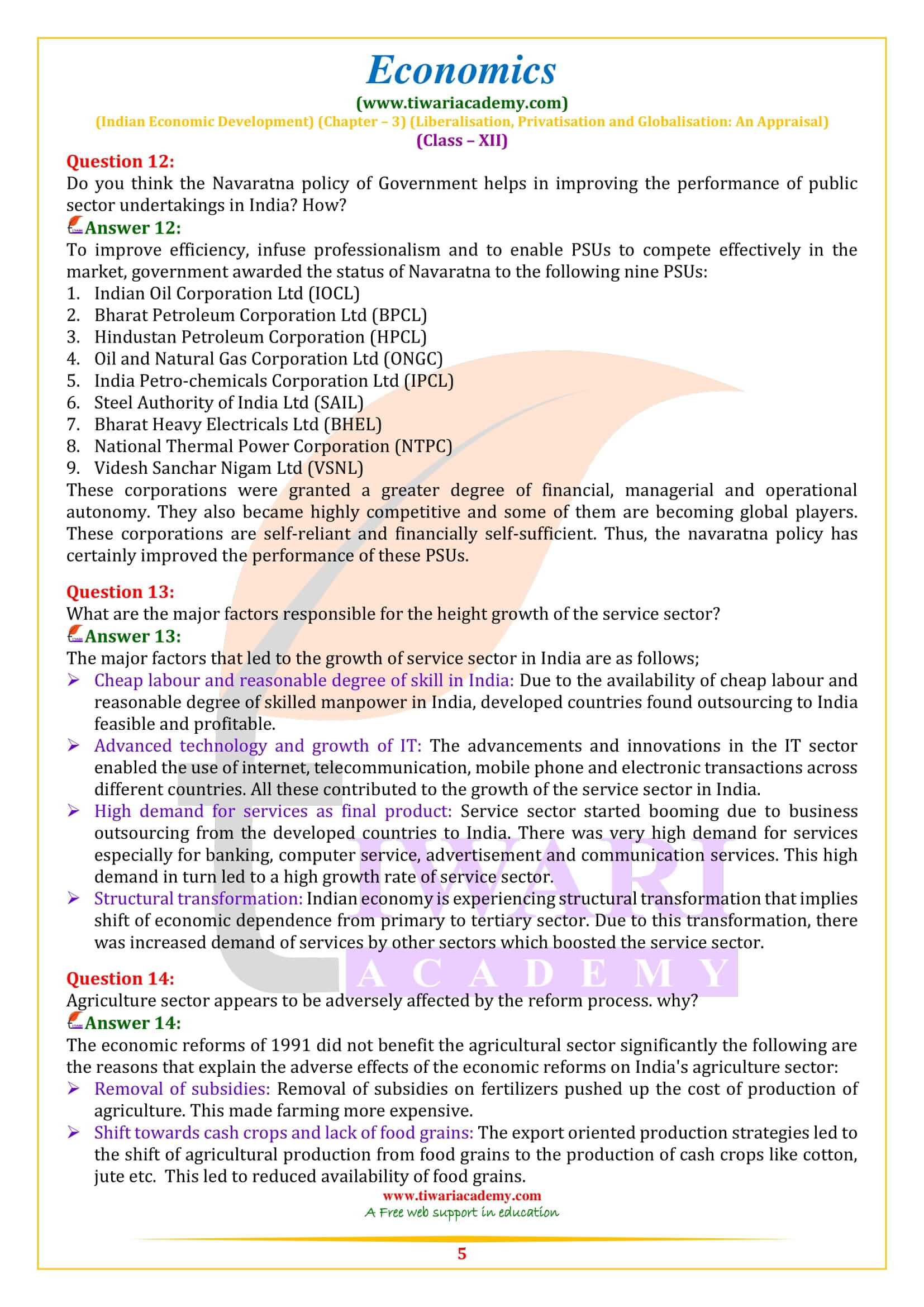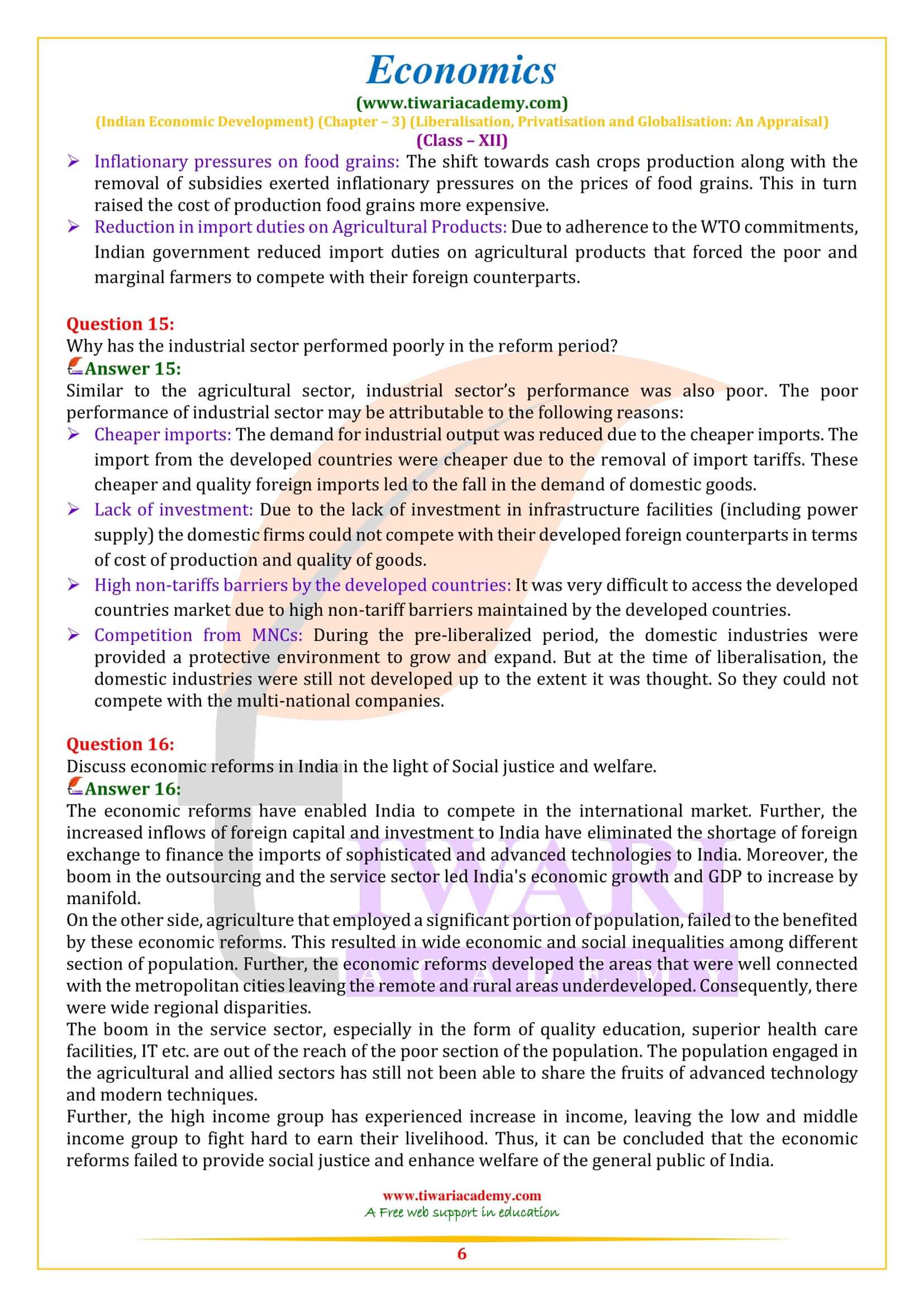NCERT Solutions for Class 12 Indian Economic Development Chapter 3 Liberalisation, Privatisation and Globalisation an Appraisal in Hindi and English Medium designed for session 2025-26. Get here MCQ and Important question answers based on class 12 Economics chapter 3 with complete explanation.
Class 12 Indian Economic Development Chapter 3 Question Answers
Background of Financial Crisis
The origin of the financial crisis is often copied from the inefficient management of the Indian economy within the 1980s. We all know that for implementing varied policies and its general administration, the govt generates funds from varied sources like taxation, running of public sector enterprises etc. Once expenditure is over financial gain, the govt borrows to finance the deficit from banks and additionally from folks among the country and from international money establishments. After we import merchandise like fossil fuel, we tend to pay in dollars that we tend to earn from our exports. Within the late 1980’s, government expenditure began to exceed its revenue by such an enormous margin that the expenditure through borrowing became unsustainable.
International Bank for Construction and Development
India approached the International Bank for Construction and Development, referred to as IBRD or World Bank, and IMF (International Monetary Funds), and received 7 billion dollars as a loan to manage the crisis. For availing the loan, these international agencies expected India to liberalise and open up the economy by removing restrictions on the non-public sector. India united to those conditions and a replacement policy was launched. It consisted varied economic reforms. The thrust of the policies was towards creating more competitive surroundings within the economy and removing the barriers to enter and growth of the businesses.
This set of policies are often classified into two groups: the stabilisation measures and the structural reform measures. Stabilisation measures are short-term measures, supposed to correct a number of the weakness that have developed within the balance of payments and to bring inflation in check. In easy words, this suggests that there was a need to maintain sufficient foreign exchange reserves and keep the rising prices under control. On the alternate hands, structural reforms measures are long-term measures, aimed towards the potency of the economy and increasing its international fight by removing the rigidities in varied segments of the Indian economy.
Tax Reforms and Foreign Exchange Reforms
Tax Reforms: Tax reforms are involved with the reforms within the government’s taxation and public expenditure policies, that are collectively known as its fiscal policy. There are two forms of taxes: direct and indirect. Direct taxes accommodate taxes on incomes of people, as well as, profits of business enterprises. Since 1991, there has been never-ending reduction within the taxes on individual incomes because it was felt that top rates of taxation were a very important reason for non-payment. It’s currently wide accepted that moderate rates of taxation encourage savings and voluntary disclosure of financial gain. The speed of corporation tax, that was terribly high earlier, has been bit-by-bit reduced.
Products and Services Tax Act 2016
Efforts have additionally been created to reform the indirect taxes, taxes levied on commodities, so as to facilitate the institution of a standard national marketplace for product and commodities. In 2016, the Indian Parliament passed a law, Products and Services Tax Act 2016, to modify and introduce a unified taxation system in India. This law came into impact from July 2017. This is often expected to get further revenue for the govt, cut back non-payments and make ‘one nation, one tax and one market’. Another part of reform during this space is simplification. So as to encourage higher compliance on a part of taxpayers, many procedures are simplified and the rates also well down.
Foreign Exchange Reforms
The primary vital reform within the external sector was created within the exchange market. In 1991, as a direct measure to resolve the balance of payments crisis, the rupee was debased against foreign currencies. This junction rectifier to a rise within the influx of exchange. It additionally set the tone to free the determination of rupee worth within the exchange market from government management. Now, a lot of typically than not, markets confirm exchange rates supported the demand and supply of foreign exchange.
Reforms in Agriculture and Reforms in Industry
Reforms in Agriculture: Reforms haven’t been able to profit agriculture, wherever the expansion rate has been decelerating. Since 1991, public investment in agriculture sector particularly in infrastructure, which has irrigation, power, roads, market linkages and analysis and extension (which compete an important role within the Green Revolution), has fallen. Further, the partial removal of chemical grant has led to extend within the value of production, that has severely affected the little and marginal farmers.
This sector has been experiencing a variety of policy changes like reduction in import duties on agricultural merchandise, low minimum support worth and lifting of quantitative restrictions on the imports of agricultural merchandise. These have adversely affected Indian farmers as they currently got to face multiplied international competition. Moreover, attributable to export-oriented policy ways in agriculture, there has been a shift from production for the domestic market towards production for the export market that specialize in money crops in position of production of food grains. This puts pressure on costs of food grains.
Reforms in Industry
Industrial growth has additionally recorded a retardation. This is often attributable to decreasing demand of commercial merchandise thanks to numerous reasons like cheaper imports, inadequate investment in infrastructure etc. In an exceedingly globalised world, developing countries are compelled to open up their economies to larger flow of merchandise and capital from developed countries and rendering their industries prone to foreign goods. Cheaper imports have, thus, replaced the demand for domestic products. Domestic makers face competition from imports.
The infrastructure facilities, as well as power supply, have remained inadequate thanks to lack of investment. Globalization is, thus, usually seen as making conditions for the free movement of products and services from foreign countries that adversely have an effect on the native industries and employment opportunities in developing countries. Moreover, a developing country like India still doesn’t have the access to developed countries markets attributable to high non-tariff barriers.
How is the chapter 3 Economic reforms class 12 of Indian Economic development relevant from examination point of view?
The economic reforms are broadly classified as liberalization, Privatisation and Globalisation. All the three are important from examination point of view. A question can be asked to assess or give your views and comments on how far these were successful.
What are important contents in the chapter 3 Economic reforms of 12 Economics?
Reforms were made in all sphere like taxation, Banking, fiscal, Trade (import & export policy) etc. in an exam, anything can be asked. So study this topic in depth.
Yes, Indian planners tried their best to pull the Indian Economy out of the mess they were there in 1947. Due to several reasons. Like failure of public sector, poor exports, independence of goals India had to open up the economy in 1992. To understand chapter 3 the base is chapter 2.
